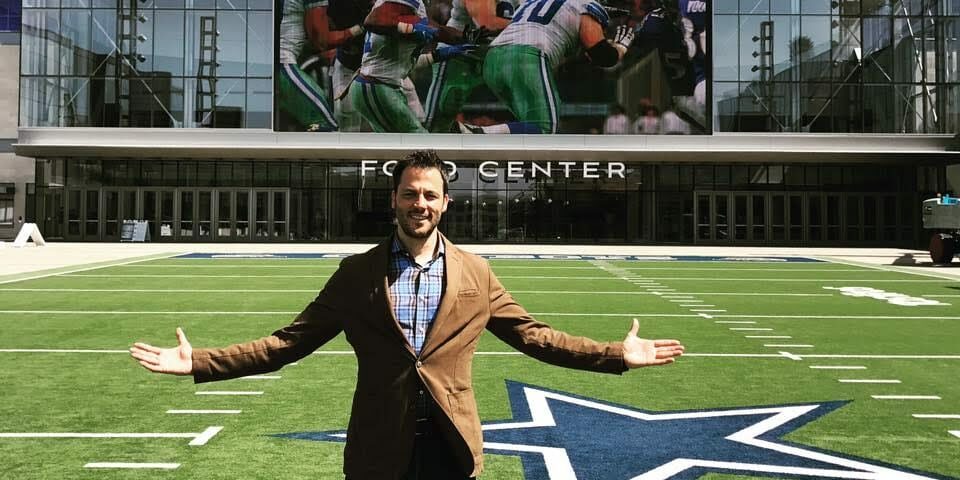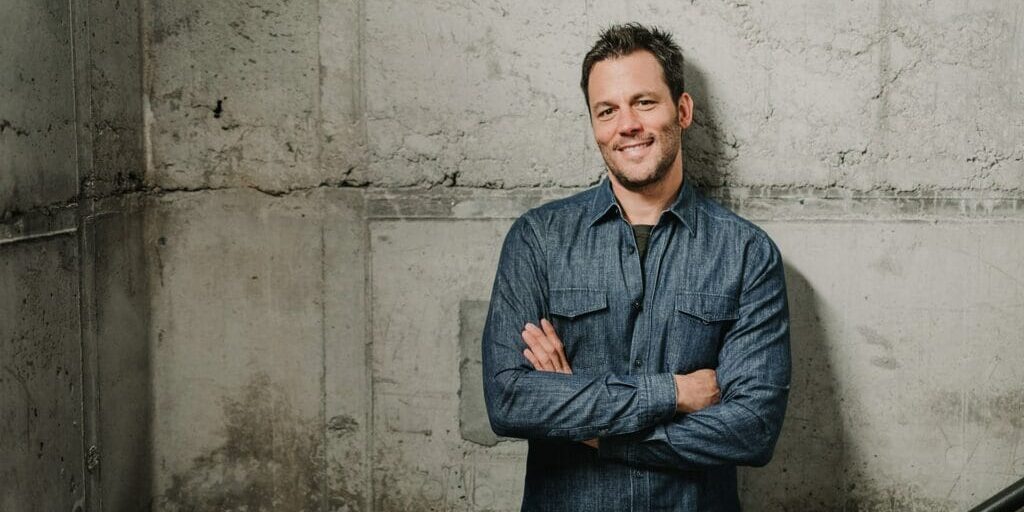Last week, I helped Motorola Solutions launch the Symbol TC70, its new B2B handheld computer. A product launch is a different kind of live event for me, and I wasn’t entirely sure what to expect, but they absolutely crushed it! Hundreds of employees were gathered in the company’s three-story atrium in New York, and thousands more employees, customers and partners around the world logged in to watch live.
I spent a little time with the mastermind behind the event, Michael Peterson, who manages marketing for enterprise mobile computing products at Motorola Solutions. This was his first “live launch” and he shared valuable insight for B2B product marketers considering the best way to introduce new products to the world.
What inspired you to produce a live launch event for the TC70?
Compared to B2C, working in B2B marketing has always been a little conservative. But, we’ve seen big changes in B2B marketing in the past five years. As we gain new avenues for reaching people, marketing has become more edgy, fun and creative. Our team wanted to leverage some of the elements we see in B2C marketing and apply them to our own work.
Part of what drove the decision to pull off a big, live product launch was the product itself. The TC70 is a B2B enterprise device, but it uses a lot of consumer-friendly technology. So, we wanted to spread the word about how the product is affecting people’s jobs and their lives. We thought a live launch event could be a way to create a rallying cry around this product.
How did you promote this event to your customers and the broader tech community?
We tried something new and created a short, 30-second teaser video about the event and the product. The video got a lot of attention, and quickly became one of the most successful videos we’ve ever created. We wanted people to know that this wouldn’t be another conference call with PowerPoint slides.
When people think about B2B, sometimes they think “boring.” This event was anything but. How did you create such a strong emotional experience at a B2B technology event?
In the past, our marketing and product launches have been mostly fact-based. What’s the customer’s problem? How are we solving it? How are we going to impact their business? There wasn’t a lot of emotion there.
This time around, we felt strongly that we needed to show how the product is improving the lives of front-line employees and the broader community. So, we took a risk and created videos that tapped into heartfelt emotional moments. We saw video as a way to simplify why this product is important and what impact it’s making.
We’re a big company with a huge pool of employees, customers and distributors, and sometimes it’s tough to show the human side of such a large organization. In these videos, we’re telling the stories behind the products. Through these videos, we let the veil down so that people can connect with who we are and why our work matters so much to us.
You mentioned this was a big change from your previous marketing strategy. How did you convince the team internally that an emotionally-charged live event was the way to go?
Our entire marketing team has wanted to get more assertive and be more forward-thinking in our launches. But, whenever you suggest something new, you’re going to hear reservations. Why are we spending more on this launch? Will we get the leads we’re looking for? Who’s the target audience?
You’re always going to have naysayers. But, we were able to make this happen because we had executive leaders who were excited about these ideas and pushed to make them happen. We accomplished this new kind of launch event because our leadership stood behind us and advocated for our ideas. The key is to weed through the reservations and hesitations and find your internal support. Focus your energy there.
I was struck by how many employees were in the room. How did you get employees involved in a marketing event?
Our group launches 20 new products a year. It’s easy to fall into the grind — get the product information, launch it, and move on to the next one. So, we wanted to do everything we could to break that cycle and make this launch feel special for all of the employees who were involved in developing, creating and launching the TC70. We wanted to celebrate the moment and all of the hard work that led up to it.
When we were initially planning the event, we looked at all kinds of venues — conference centers, theaters and other big spaces. But in the end, we decided to have the event right in our own office building where 1,000 of our engineers and developers work. We have a huge three-and-a-half story atrium in the center of our building, and everyone has to walk through it to get anywhere else.
We hired a production company to transform the space overnight. The space has a huge skylight, and the first thing we did was cover it up. No one had ever seen the space darkened, with a stage, and boom lights, and speakers and backdrops. When employees came into work in the morning, there was a lot of organic buzz and excitement in the building. Everyone at the company was chattering about it. A great way to promote the event internally was to just hold it right there in the middle of the day-to-day office flow.
Sometimes the people who do the most work on a product — the developers and engineers — don’t have a central role in product marketing. So, we wanted to make those employees front and center and celebrate their work.
I know the event was a huge hit externally, and you created a lot of buzz online. But what was the feedback from employees?
I’m proud of the reaction we got internally. Employees thought it was the best launch they’d ever seen. Our developers and engineers are the backbone of the organization. They felt like we’d created a five-star event for them, with inspiring content and a powerful presentation. We showed our employees the monumental impact that each one of them has on the business.
When considering your next launch, take a page from the Motorola playbook and go live! If you do it right it will make a big difference to the people supporting the product.







